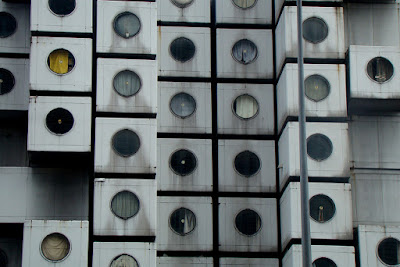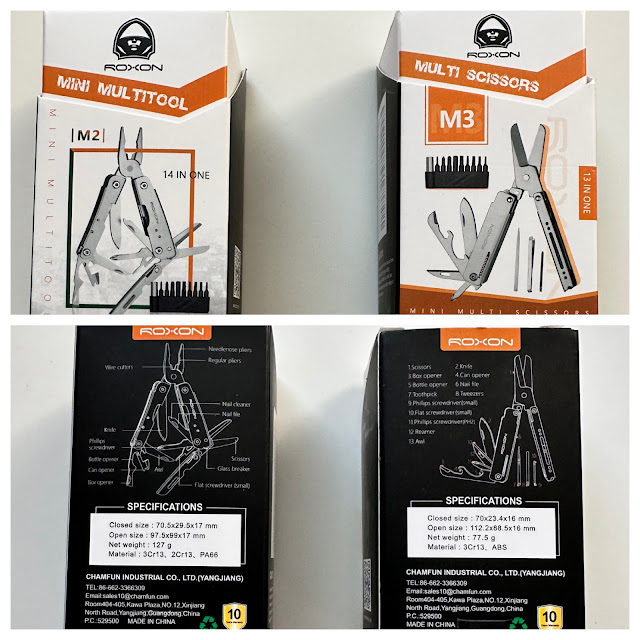Futuristic Nagakin Tower
Update 2022: After years of controversy, the now dilapidated tower was torn down in the summer this year. Some of the capsules have new homes in various museums, but the building was pretty much allowed to run down. There wasn't even hot water running at the end.
When I was visiting Tokyo, I basically ended up face to face with this very interesting landmark building one night (I was semi-lost on the south end of the Shiodome). I'd seen pictures of it before, but it was pretty cool to see it up close. Basically, this building is the ultimate in minimalist design and evolution of a capsule hotel if you treat each apartment as a capsule. It kind of looked a little run down to me, but I didn't know that it was a building that was unmaintained and now marked for demolition. Quite possibly, there will be a new building here when I visit next. The residents of the building have voted to have it torn down as they feel it is unsafe (due to earthquakes) and that a better use of space can be found for the site. Some of the capsule apartments have been preserved and one was on display in the winter of 2011-2012 at the Mori Museum. The location of this building can be found at my Shiodome post here.
 |
| Nakagin Tower Flickr / izumi_mitatami |
Completed in 1972, the building is a rare built example of Japanese Metabolism, a movement that became emblematic of Japan's postwar cultural resurgence. The building was the world's first example of capsule architecture built for actual use. The building is still in use as of 2010, but has fallen into disrepair. The building is actually composed of two interconnected concrete towers, respectively eleven and thirteen floors, which house 140 prefabricated modules (or "capsules") which are each self-contained units. Each capsule measures 2.3 m (7.5 ft) × 3.8 m (12 ft) × 2.1 m (6.9 ft) and functions as a small living or office space. Capsules can be connected and combined to create larger spaces. Each capsule is connected to one of the two main shafts only by four high-tension bolts and is designed to be replaceable. No units have been replaced since the original construction." From Wikipedia
 |
| Nakagin Closeup Flickr / by x00 |
 |
| Capsules and Tower Flickr / n fiore |
 |
| Capsule Cutaways Flickr / n fiore |
 |
| Capsule Interior Flickr / n fiore |
Below are bunch of other links to information about this building.
http://www.designboom.com/weblog/cat/9/view/17562/kisho-kurokawa-nakagin-capsule-tower-building.html
http://en.wikipedia.org/wiki/Nakagin_Capsule_Tower
http://pingmag.jp/2008/12/22/nakagin/
http://www.arcspace.com/architects/kurokawa/nakagin/nakagin.html











Comments
Post a Comment